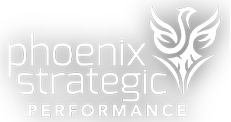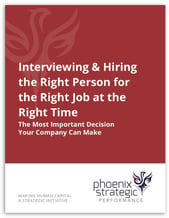Welcome to the 10-Point Guide to help you have your best year yet. The Guide is structured in two parts:
- Part 1: A “Look Back”
- Part 2: A “Look Forward” (covered in the next blog)
All you need is some quiet time, a few sheets of paper (or a journal), something to write with, and your calendar from last year if you keep one. Then, go through the questions in the 10 Points with as much honesty and compassion for yourself as possible.
It’s up to you, but I find that keeping it brief by using lists and bullet points allows me to capture my thoughts at the moment while also making it easier to review/make sense of them later.
The 10-Point Guide is meant to help you gain the clarity and confidence you need to get the year off to a great start and then stick with it. But most of all, have fun with it and enjoy your year! Remember: time is the only thing we cannot make more of or get back.
10-Point Guide for Making This Year Your Best Year Yet: Part 1
1. Look Back: The purpose of the “Look Back” is to reflect on the year you’ve just gone through, recognize your accomplishments, learn from what didn’t go as well as you wanted, and extract the key themes and takeaways that you can build on to make the coming year the best one yet.
Take out your journal or sheets of paper and write your answers to the following questions.
2. What you did: Get out your calendar to help jog your memory and review it monthly to look at what you did and the activities you engaged in. If you don’t keep a calendar, then just think back to the start of the year and take the mental journey through each month or each quarter. As you do this, write down your thoughts on the following in list or bullet point form:
- What did you accomplish? – I found it helpful to list this by month as I reviewed my calendar. If there is a great deal of information, you could go back over the finished list and use different colored highlighters to emphasize themes or categories.
- What did you think about going well? What would you do differently? – Make two lists: “went well” and “do differently.” Keep in mind that “do differently” is not about giving yourself a hard time about failures, but rather a dispassionate look in hindsight)
- How many “firsts” did you have, how many new things did you do, and what were they? – This measures how much new ground you’ve explored or covered. Were there too many, not enough?
- What were your goals for the year, and how did you do? – List the goals you set last year, if any, and assess your progress.
3. What you learned: Now that you’ve reviewed what you did, it’s important to summarize what you learned from the year. Make a list of your main takeaways in terms of what you learned:
- About yourself – Self-reflection is important for developing your self-awareness, which in turn is the foundation for being able to self-manage)
- About other people who are important to you – This helps you to be more empathetic and enhance your relationships with the people who matter most to you personally and professionally.
- About your business – This helps you to deliver better results going forward.
4. People you need to thank: None of us “make it” on our own, and this is an ideal time to reflect on who has supported and encouraged you (and those you care about) during the year. Make this list in a spirit of gratitude and generosity.
- Who are they – Beyond the obvious names, remember to include the people who often go un-thanked for what they have done. This can include someone who supported your point in a contentious meeting or the person who cleans your facilities.
- How and when to express thanks – With some, it may be a handwritten note or email; with others, it may be a call, a gift, or thanking them in person. Make a plan for when you will deliver your thank you, and remember the old adage: “There’s no time like the present.” And the Nike message, “Just do it,” also comes in handy.
5. Main themes and takeaways: This is where you synthesize the lists you have made in points 1-3 above and boil it down to just a few main themes and topics you can work with. To make this practical and user-friendly, keep this brief – less is more.
- What was the year about? Write down the main themes – I recommend up to 3
- Any other key takeaways? List any other key items you want to remember and utilize as a foundation for next year
- How does this influence what you want next year to be about? You can write this next to your main themes from the prior bullet points. As an example, my answer to this synthesis section is:
“This was a year of ‘firsts’ for me as I consolidate and build on this for next year.”
Now that you have set your foundation through the “Look Back” points make sure to join us next week for Part 2: the “Look Forward”. That’s where you will both “dream big” and connect with the “nitty gritty” so that you can come away with a clear game plan for the year and a system for making sure you follow through and have that great year!
This is a guest blog post from May Busch. May Busch, former COO of Morgan Stanley Europe, brings a fresh perspective to helping people and organizations lead positive change.





